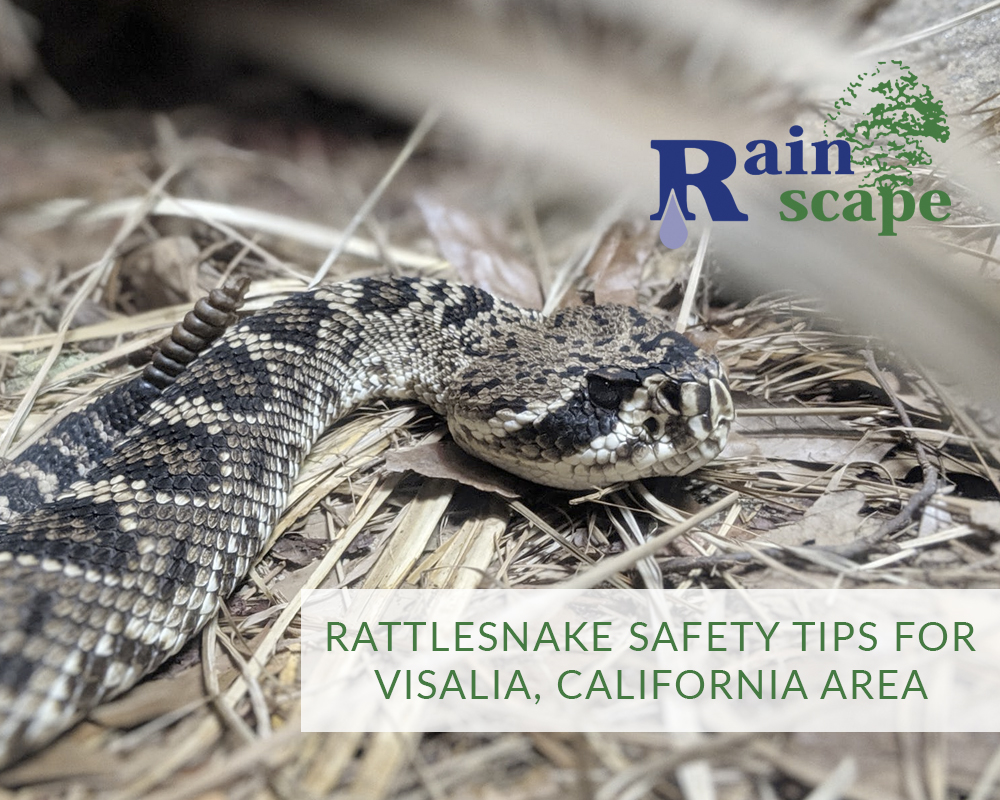Summer’s here, and everyone’s enjoying the weather – including the rattlesnakes. Commonly found here in the San Joaquin Valley, rattlesnakes are one of several species of snakes that are native to the region. They are a beneficial part of our environment, but deserve respect and caution when you happen to spot one. We know a lot of our clients will encounter a rattlesnake around their homes, on hiking trails, or just traveling in the area, so we gathered these rattlesnake safety tips for guidance.
Even though you might be frightened when you see a rattlesnake, it is important to remember that they generally just want to be left alone and will only strike if threatened and acting in self-defense.
If you spot a rattlesnake while you’re walking and near it, back away slowly and avoid making sudden movements. Do not throw things at it to scare it away, that will only make it feel threatened and then act aggressively in self-defense. If you are hiking or somewhere that you cannot continue and need the snake to move, often stomping on the ground nearby will create shock waves in the earth that will prompt it to move on.
While you can’t control rattlesnakes in public areas, you can do a few things around your home to discourage them from visiting.
Eliminate food and water sources that might attract rattlesnakes. One of their main food sources are rodents, so if you have mice or rats, snakes will find your yard to be very attractive. Call an exterminator service if your rodent problem is beyond your control. You can also cut back on rodents by making sure your garbage cans and composters are always tightly covered, keep pet food inside or tightly covered, and keeping birdfeeders from accumulating large amounts of fallen birdseed on the ground underneath.
Water sources should also be considered that might attract rattlesnakes. Fix leaky outdoor faucets and adjust your irrigation system so that it doesn’t leave standing pools of water anywhere on your property.
Next, look around your property and get rid of any areas that might appeal to rattlesnakes as a hideout. Rattlesnakes like to hide in overgrown brush, rock and wood piles, tool sheds, pool pump houses and pretty much any place that provides safety and shelter.
If you have pets, especially playful dogs, that spend time outside where they might encounter a rattlesnake, ask your vet about rattlesnake vaccine. It’s important to note that the vaccine does not mean your pet is venom-proof, just that it blocks the venom from working quickly, allowing you time to get them to the vet for treatment if they are bitten. There are also rattlesnake safety and avoidance classes that are great for teaching your dog to avoid the sight or sound of a rattlesnake.
Unfortunately, no matter how much you prepare, it’s possible that you, someone in your family, or a pet might get bitten. In that case, be sure that everyone knows what steps to take and who to call for medical help and for help removing the snake if it sticks around.

